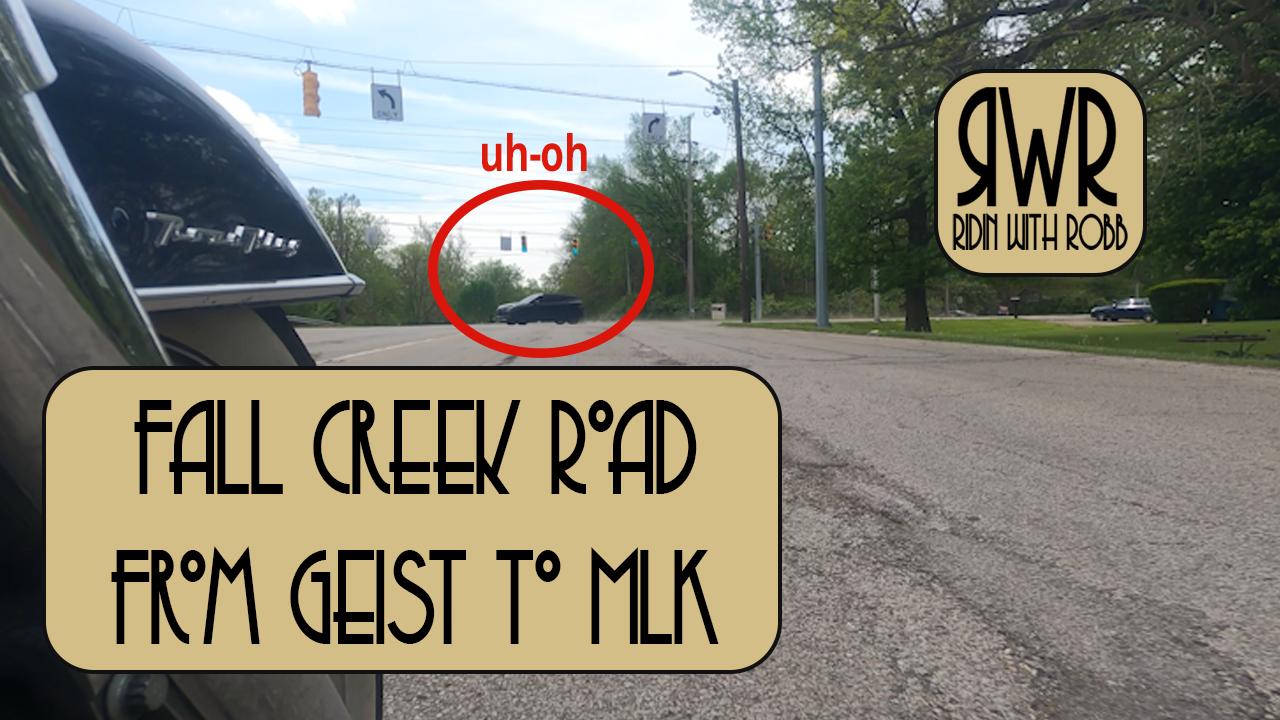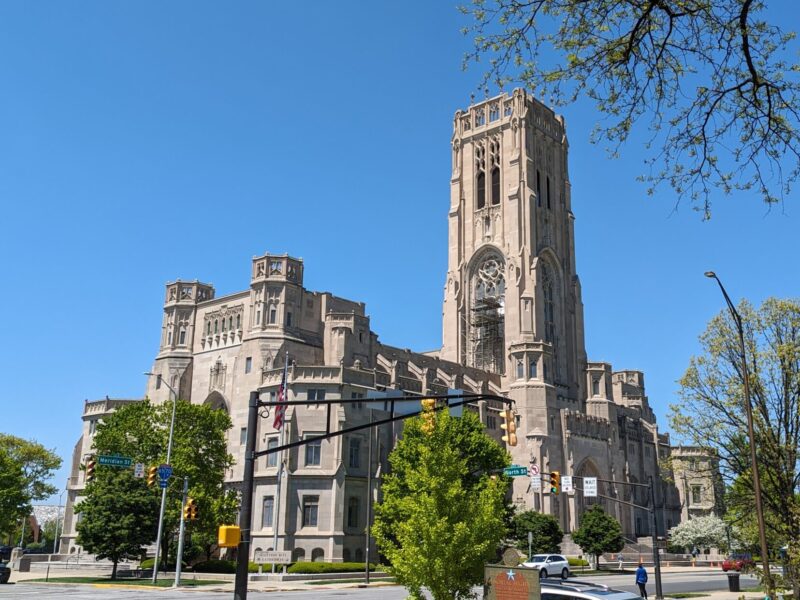This ride had the practical reason of I needed to go downtown. It was a nice day so I made a quick trip up to Geist Reservoir and the Northern county line and took Fall Creek Road into town. Its always a great ride…but if you happen to be paying attention towards the third act, I get a reminder of why we always slow down and check out intersections. ESPECIALLY in town.
Here is some background and history of Fall Creek Road.
Fall Creek Road in Indianapolis has a rich history that reflects the development of the city and the surrounding region. Here’s an overview:
Early Settlement and Indigenous Presence: Fall Creek Road runs along the path of Fall Creek, which was historically inhabited by various Indigenous peoples, including the Delaware (Lenape), Miami, and Shawnee. These tribes utilized the waterways for transportation, fishing, and trade.
European Settlement and Development: The area that is now Indianapolis was first settled by Europeans in the late 18th century. Fall Creek became an important waterway for early settlers, providing power for mills and serving as a transportation route. The road likely originated as a Native American trail, later widened and improved by settlers for wagon travel.
Role in Transportation: As Indianapolis grew into a major city in the 19th century, Fall Creek Road played a crucial role in connecting the city with surrounding rural areas and neighboring towns. It served as a primary route for farmers bringing their produce to market, as well as for travelers moving between settlements.
Industrialization and Urban Expansion: The 19th century saw significant industrial development along Fall Creek, with mills, factories, and other businesses taking advantage of its water power. This industrial activity spurred further growth along Fall Creek Road and in the surrounding neighborhoods.
Urbanization and Modernization: In the 20th century, Indianapolis experienced rapid urbanization and infrastructure development. Fall Creek Road was widened and improved to accommodate increasing automobile traffic. Residential neighborhoods and commercial districts grew along the road, shaping its character and contributing to its importance as a transportation corridor.
Present Day: Today, Fall Creek Road remains an important thoroughfare in Indianapolis, serving as a major east-west artery through the city. It provides access to residential areas, parks, businesses, and cultural attractions. While much of its historical significance has been overshadowed by modern development, remnants of its past can still be seen in the form of historic buildings, bridges, and landmarks along the route.
Overall, the history of Fall Creek Road reflects the broader story of Indianapolis, from its early days as a frontier settlement to its emergence as a vibrant urban center in the heart of the Midwest.


